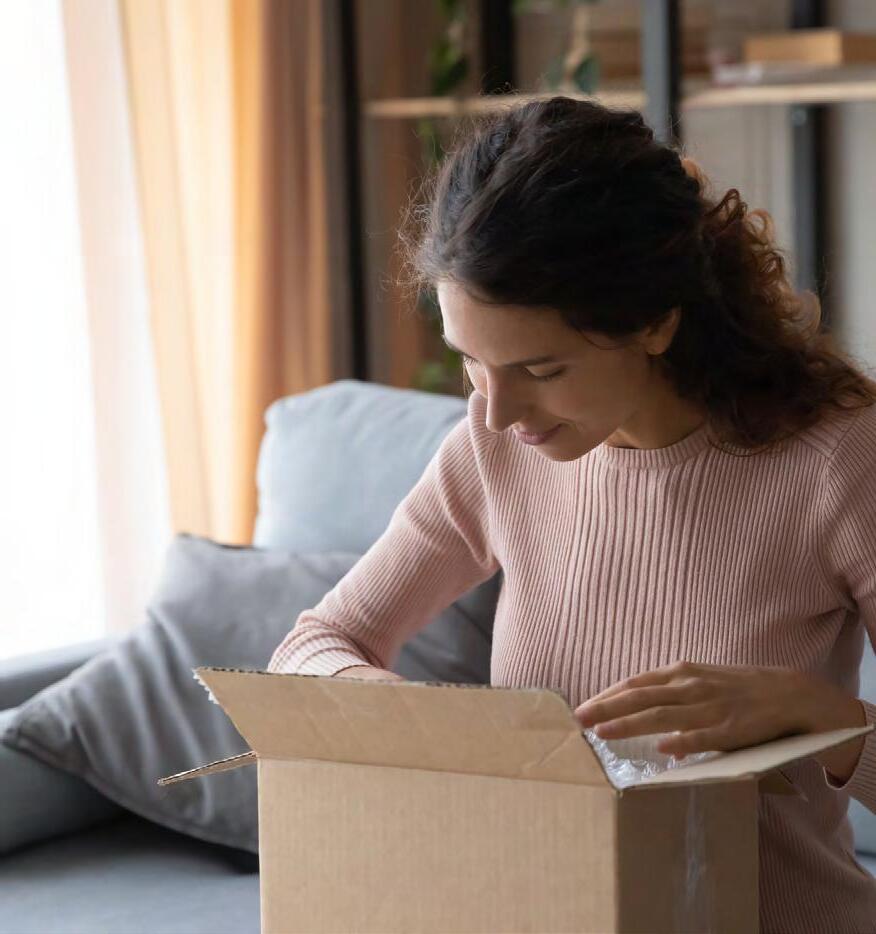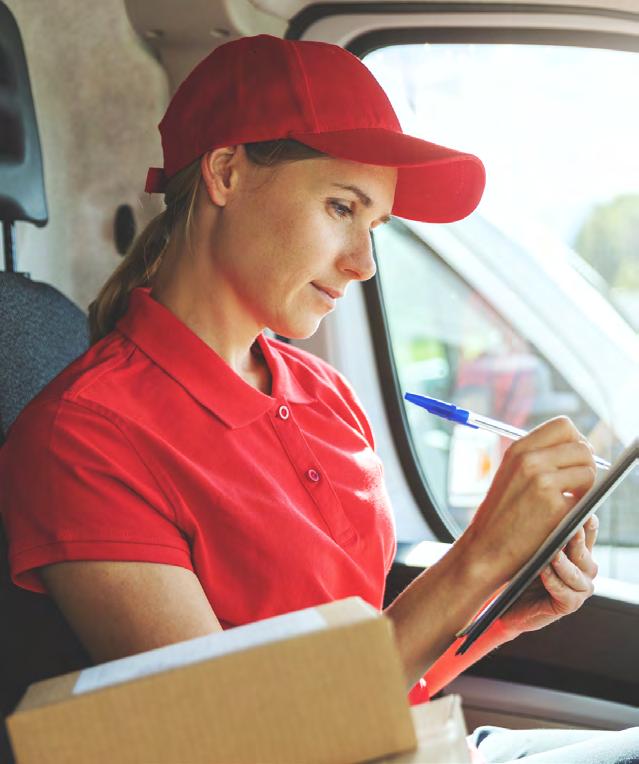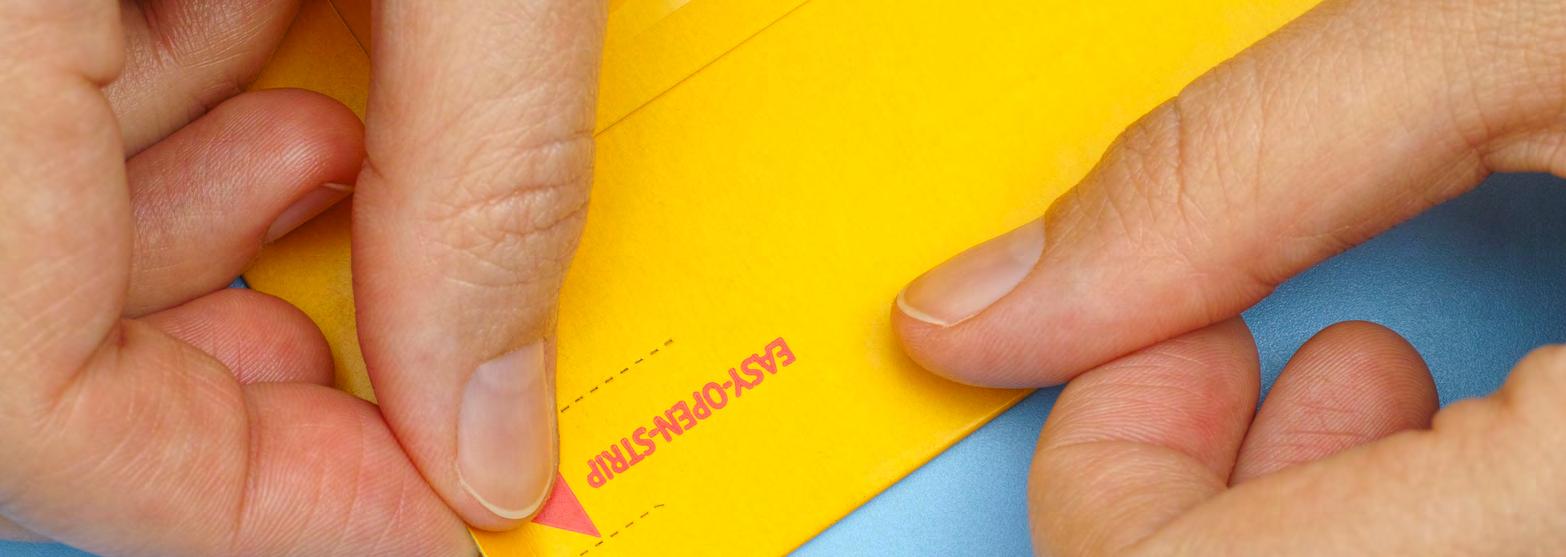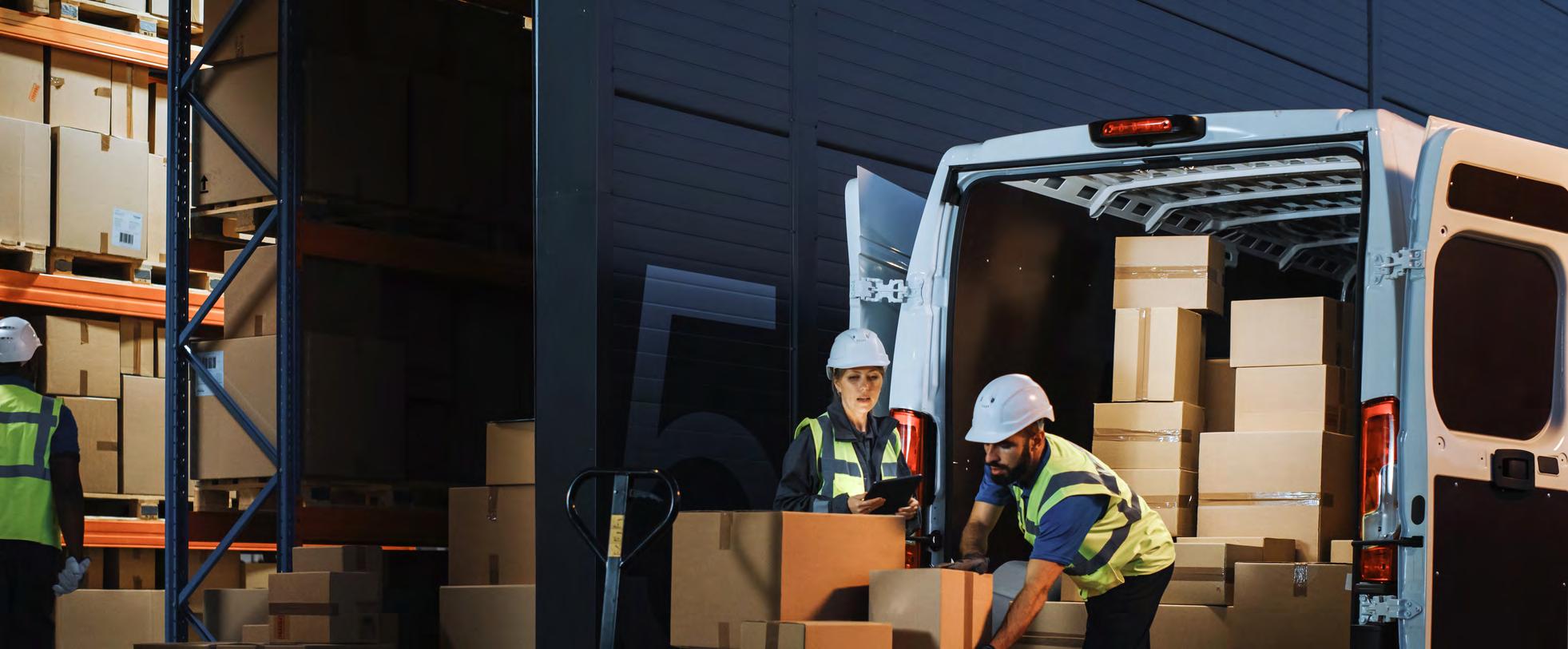Does your packaging meet consumer expectations?
How to ensure your e-commerce packaging resonates with your consumers



Focus on three consumer needs to ensure a good brand experience
Product protection via appropriate packaging is a basic element needed to ensure a successful online delivery experience. However, as online purchasing becomes more frequent and penetration of different categories in online increases, consumer behaviours also evolve, with extra convenience and sustainable packaging features being two central ways that your brand can gain an added edge.
The story: The fundamental properties of packaging (to protect the product inside) aren’t currently being met for all consumers. Packaging is your presentation and one of the first physical touchpoints that a consumer will have with a product bought online, meaning a negative experience will hurt your brand and could impact on future sales. Prioritise durability as an essential and non-negotiable area.
The cost of inaction?
58% of online shoppers said they would stop ordering from a company if they received a damaged product repeatedly.

#01
#02

The story: Consumers’ everyday lives are busy. As one of our online shoppers said, “if there wasn’t so much stuff to do”, they would find it easier to return products. Simplify the e-commerce purchasing journey for consumers through convenient and functional packaging. Packaging accessibility and ease of use is a key experience enhancer.
The cost of inaction?
29% of online shoppers who have returned something recently say they find the returns process frustrating, meaning you could lose these shoppers purchasing from you via this channel.
The story: Even during tough economic times, the basics of sustainability need to be prioritised. Sustainable packaging is high in the minds of consumers and if your packaging doesn’t fit their image of sustainability, this will affect their perception of your brand. A notable proportion of e-commerce shoppers claim they will boycott companies that don’t meet their desired sustainability attributes.
26% of online shoppers said they would stop ordering from a company if they experienced too much unnecessary packaging and 22% if the packaging was not recyclable or difficult to recycle.

#03
To conclude
Neglecting to consider the negative impact of a poor packaging experience means you risk losing repeat purchase in that channel and damaging your wider brand reputation. To take things further, as packaging is the first touchpoint that a consumer has with your product, seize the opportunity to go beyond an average experience and create something truly memorable in that interaction.
Harness packaging as an important marketing channel within which to build and grow your brand.

DS Smith partnered with Mintel Consulting to conduct and run a bespoke survey on consumer attitudes towards e-commerce packaging. DS Smith is a leading provider of sustainable corrugated packaging, paper products and recycling services worldwide, operating in more than 30 different countries, employing around 30,000 people.
Mintel is the world’s leading market intelligence agency, headquartered in London, providing research and intelligence solutions to consumer-focused businesses for more than 50 years.
When: January 2023
Who: 500 internet users aged 16+ who shop for physical products online at least every 3 months
Where: United Kingdom
Why: To understand consumer attitudes towards packaging from online deliveries, and the role that packaging plays within the world of e-commerce.
The arrival of COVID-19 in the UK market greatly altered the way in which people shopped online, with 2020 seeing a 48% growth in online retail sales.1 This was the fastest growth seen since the ONS began publishing such data in 2008, and this accelerated the maturity of the market.
After a dip in 2022, the online retail market is expected to stay in growth through to 2027. By 2027 Mintel expects the market to be worth 30.3% of all retail sales, which is just behind the channel’s current record share in 2021.2
The UK are frequent and adept e-commerce purchasers, with over 1 in 3 (34%) online shoppers claiming to shop online at least once a week, in our 2023 survey. People of all ages and demographics are growing more comfortable buying products online, with 1 in 4 online shoppers aged 55+ engaging in online shopping at least
once a week. Fashion is the most popular e-commerce category to buy from, with 71% of online shoppers buying from the clothing & footwear category in the last 12 months.
The past few years have seen consumers expand the variety of products for which they shop online, with 34% shopping in fragrances & body sprays and 31% shopping in long-life food, drink and household care. That means packaging for everything from delicate bottles to heavy bulk liquids must be considered and able to prevent breakage, spillage, and spoilage via the e-commerce distribution channel.

From which of the following categories have you ordered a physical product online in the last 12 months? Please select all that apply.
Clothing & footwear
Media & entertainment
Beauty & personal care
Electronics
Home & garden
Fragrances & body sprays
Long-life food, drink & household care*
Toys
Accessories
Gifting virtually is also very common, with over 4 in 5 (81%) online shoppers ordering a physical gift for other people online in the last 12 months.
This means that, with online representing a significant proportion of the wider retail market, consumer expectations towards their delivery experience have evolved and
will continue to become more demanding, expectant, and vocal.
Indeed, many people share their packaging experience with others, whether it is good or bad. 57% of online shoppers have shared an experience of the packaging they received from online orders, rising to 78% for younger shoppers (aged between 16 and 34).
The majority of consumers have shared a previous packaging experience with others.
• If the experience they are sharing is positive, your packaging can be a powerful type of advertisement for your brand.
• But if the experience they are sharing is negative, this presents a risk to your brand’s reputation.
Do safeguard your brand, avoid reputational risk, and ensure the experience being shared is positive by considering the entire packaging journey through the lens of your consumer.
Have you ever shared your experience of the packaging reviewed on your online orders? - Yes
Whilst word-of-mouth is the most popular way for people to share their packaging experience with others, newer methods of sharing are also noteworthy:
Over 1 in 3 (37%) online shoppers share their packaging experience via an online review and 1 in 5 do so via social media.
‘Unboxing’ videos are a growing trend on social media platforms, giving wider audiences insight into how packaging for various brands is represented.
Packaging, and the experience when opening a package, is the first touchpoint that consumers have with a brand – before the product itself. As a result, your brand must consider the equity it could forfeit if consumers do not feel that the package and opening experience reflects your brand ethos.
Packaging underpins the brand perception and experience, from opening through to its final disposal via returning or recycling.
Focus on three core packaging needs to ensure a positive customer experience:
Durability and protection against damage
Ease and convenience
Sustainability attributes

The UK online shopper is not very tolerant of spoiled deliveries. Indeed, 58% of online shoppers state they would stop ordering from a company if they received a damaged product repeatedly and 25% state they would do so if they just received damaged packaging repeatedly.
32%
online shoppers have actually experienced damaged outer packaging in the last 12 months.
13%
have experienced a damaged product on delivery, rising to nearly 1 in 5 (19%) for those who shop more regularly (at least once a week) online.

Most online shoppers (62%) in the UK see the courier as responsible for a damaged package, as opposed to the packaging firm or the seller. However, both these latter parties are seen as having some responsibility by 12% of online shoppers respectively. While the courier is blamed first, a negative packaging experience might hurt a seller’s reputation, especially if the occurrence happens multiple times. Nearly 1 in 3 (31%) of the online shoppers who experienced damaged outer packaging state that they shopped less often online from that retailer in the future as a result.
The consumer will not always tell the seller if they have experienced a damaged package or product. Indeed, 51% of online shoppers did not do anything after their damaged package experience, meaning that the seller responsible never found out about these occurrences. Whilst these online shoppers may not inform the seller, they might share their experience with others. We know that 39% of online shoppers have shared a negative packaging experience via word of mouth.
32%
Have you experienced any of the following situations when you received the delivery of an online purchase in the last 12 months? Base:
14%
13%
Durability against external factors is of importance, with 74% of online shoppers citing a preference for packaging that protects the product when outside (for example, packaging that is waterproof).
Section 3 talks about the significant consumer interest in packaging with
sustainable attributes, and the distaste that many consumers have for overpackaging. However, even with this in mind, 49% of online shoppers prioritise protection so much that they state they don’t mind seeing an overpackaged product delivery, as long as the product is protected.
Don’t neglect the negative impact of a damaged packaging experience on your repeat purchase prospects.

Do seek direct feedback from consumers to ensure any damaged packaging experiences are captured and acted upon.
Do explore circular packaging solutions that provide ultimate protection.
Make it easy...
Packaging that safely delivers products through the e-commerce supply chain is only part of the equation. There are opportunities for companies who think and act in terms of convenience to deliver a superior consumer experience. Consumers live in an increasingly fast-paced world with multiple technological distractions, meaning packaging accessibility and ease of use becomes a key experience enhancer.
54%
The majority of online shoppers have returned something in the last year, with postal being the most popular returns method used.

Have you returned a product that you bought online in the last 12 months? If so, how did you return it?
38%
15%
Of those respondents who have returned something, 29% cite that they find the process of returning products bought online frustrating. Frustration at the returning process is generally lower for frequent shoppers (25% of those who shop online at least once a week find
12%
the returns process frustrating) and higher for infrequent ones (33% of those who shop only once a month or less find the returns process frustrating), suggesting that education could be needed for less frequent shoppers to quell any returning hindrances.
Indeed, to make returning easier the most popular packaging features cited by online shoppers are:
53%
Package comes with preprinted labels
48%
Packaging has clear instructions on how to use for return
44%

Package can be returned to a store or collection location rather than posted back
As well as this, ensuring that the systems are in place to support shoppers is key. 42% of online shoppers would stop shopping from a retailer if the customer service didn’t handle the return well or fast enough.
Make it easy… with packaging that is easy to open
47% of online shoppers cite easy to open as one of the packaging attributes most important to them, and 17% claim they would pay more for this.
15%
of online shoppers claim they would stop ordering from a company if their package was difficult to reuse for return, and 11% if the package was always difficult to open.
Packaging that is easy to open provides a more convenient initial experience, whilst also making the box reusable for future returns or for subsequent uses.

84%
of online shoppers say its important having packaging that is easy to breakdown for recycling.
32%
of respondents live in urban locations, where shared recycling bins are common, showcasing one example of why having the capability to collapse or flatten packaging is important.
Don’t add to return frustration through packaging that is not fit for the purpose.

Do anticipate the subsequent use-cases for your package and ensure it is suitable for these needs.
Do demystify and facilitate a better returns experience for less experienced online shoppers through clear instructions and preprinted labels.
Aesthetics matter for brand sustainability perceptions. A key theme that came across in the research was how consumers associate packaging with a brand’s wider sustainability strategy. Indeed, 68% of online shoppers cite they have a better perception of a company’s sustainability commitment if they received their product in paper or cardboard packaging rather than plastic.
Plastic has received a lot of negative publicity in recent years, so unsurprisingly many in the UK have a preference for cardboard.

online shoppers state that they prefer to receive a product in paper or cardboard rather than plastic packaging.
online shoppers even claim they will pay more for plastic-free packaging.
As well as the packaging material used, look and feel influence consumer perception of a company’s sustainability commitment. 61% of online shoppers view plainer outer packaging as more sustainable than colourful outer packaging. Plainer, often cardboard, packaging is likely associated with naturality compared to brighter colours.
Do prioritise corrogated cardboard as a first-choice packaging material, as online shoppers interpret this as more sustainable.
Ensuring packaging is recyclable – and easy to recycle – is a top way in which brands can respond to consumer needs.
In the UK the number one outer packaging attribute of importance to respondents is easy to recycle, with 69% of online shoppers citing this as a priority, and 25% even willing to pay more for this attribute.
As a result, recyclability of packaging should be prioritised as well as ensuring that the package has the features required to make it easy to recycle. To do this, features such as being made out of paper/ cardboard material only, as well as easy to collapse or flatten, come out top at 63% and 58% respectively.
Ensuring that the packaging is made out of all one material, including the label and tape, can also help with recycling, as one of our online shoppers noted:
[To make recycling easier] labels with delivery information should be easily removeable or made of the same material as the packaging to be recycled easily; ditto packing tape...
How could the outer package help you to recycle it more easily? Please select all that apply.
It is made out of paper/cardboard material only
It is easy to collapse/flatten
It uses minimal packaging
It is made out of any single type of material
It is made with light/thin material(s)
It
to the sender for recycling
Distaste in the UK for overpackaging is notable. 45% of online shoppers cite minimal packaging as an outer packaging attribute of most importance to them, and over a quarter (26%) would even stop ordering from a company if they experienced too much unnecessary packaging or overpackaging from them.
Overpackaging is perceived as wasteful, non-sensical, and a point of annoyance for consumers. When asked independently about one thing they would like improved regarding the packaging from online retailers, overpackaging came up frequently from online shoppers:
No big boxes with small content or box in a box which makes no sense.
No large boxes containing a small item. It is a waste.
Make sure you have different sizes of boxes at the end, because you often get a small package in a box that is much too large, which is also environmental pollution, because this means that the transporter can take much less with it in one go.
Reusing materials is an effective way of reducing the environmental impact of that material. There are different ways to reuse, from repurposing old packaging at home to returning old packaging to the company for reuse in their future deliveries.
In the UK, sentiment is positive towards receiving a new product in a previously used package, with 75% of online shoppers claiming that they would be
happy to receive this. However, willingness to return packaging to the sender to be reused is lower, at 55%, suggesting that some investment will be needed to make the ‘returning’ end of the process easier in order to make reused packaging in e-commerce a more viable option.
Reusing a piece of packaging for something else is of interest to 69% of online shoppers, rising to 75% of female respondents.
Thinking about the outer packaging of the delivery from online purchases, to what extent do you agree or disagree with the following statements? Base: 500 UK internet users aged 16+
Do ensure everything is recyclable. Consumers still see this as a top packaging priority.
Don’t annoy your consumers with unnecessary overpackaging. They don’t want to receive small products in large boxes.
Do show your consumers how they can repurpose old packages from deliveries at home.
